Nppp is a DJVU family of ransomware-type infections1. This ransomware encrypts important personal files (video, photos, documents). The crypted files can be tracked by specific “.nppp” extension. So, you can’t open them at all.
In this guide, I will try to help you remove Nppp ransomware for free. Also, I will assist you in decoding your encrypted files.
What is “Nppp”?
Nppp can be correctly identify as a ransomware-type infection.
Ransomware is a kind of virus that cryps your documents and then forces you to pay for decrypting them. DJVU (aka STOP) ransomware family was first revealed and discovered by virus analyst Michael Gillespie2.Nppp is similar to other representatives of the same family: Mool, Ooss, Mmnn. It crypted all popular file types. Nppp adds its own “.nppp” extension into all files. For example, the file “video.avi”, will be changed into “video.avi.nppp”. Hence, users cannot use the your documents, and gets a simple text file on his desktop, in which ransomware distributors offering to pay for the decrypting. As soon as the encryption is successfully accomplished, as mentioned, Nppp creates a special file _readme.txt and puts it into all folders that contain the modified files.
Here is a info for the Nppp infection:
| Ransomware family3 | DJVU/STOP4 ransomware |
| Extension | .nppp |
| Ransomware note | _readme.txt |
| Ransom | From $490 to $980 (in Bitcoins) |
| Contact | datarestorehelp@firemail.cc, datahelp@iran.ir |
| Detection5 | Ransom.Fantom.3, Program:Win32/Unwaders.A!ml, Razy.612311 |
| Symptoms | Your files (photos, videos, documents) have a .nppp extension and you can’t open it |
| Fix Tool | See If Your System Has Been Affected by .nppp file virus |
This text asking payment is for get files back via decryption key:
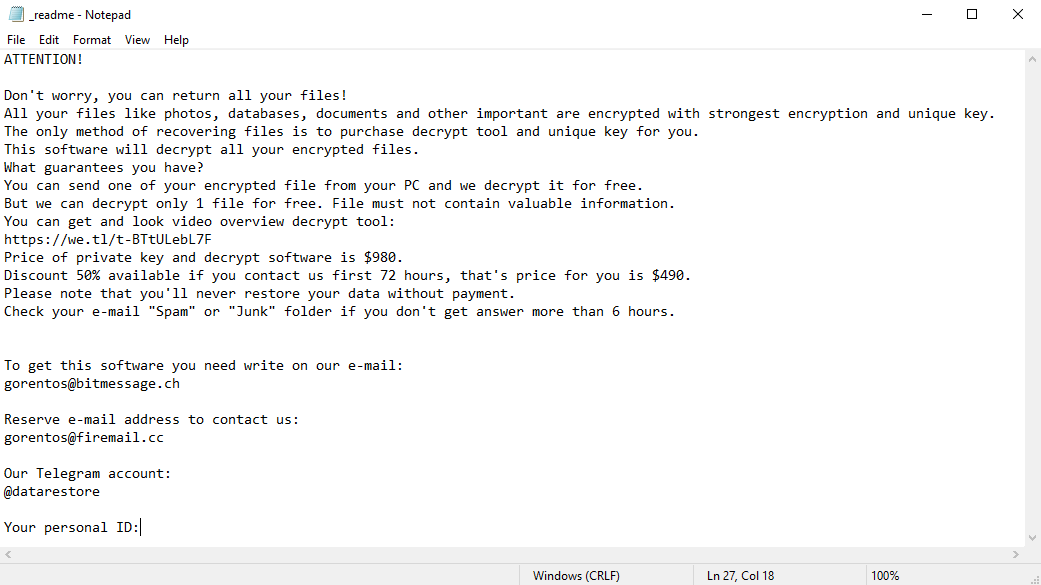
The alert demanding from users to pay the ransomware to decrypt the encoded data contains these frustrating warnings
The cryptography algorithm used by Nppp is AES-256. So, if your files got encrypted with a specific decryption key, which is totally and there are no other copies. The sad reality is that it is impossible to recover the information without the unique key available.
In case if Nppp worked in online mode, you can’t gain access to the AES-256 key. It is stored on a remote server owned by the criminals who distribute the Nppp ransomware.
For receiving decryption key the payment should be $980. To obtain the payment details, the victims are encouraged by the message to contact the frauds by e-mail (usually gorentos@bitmessage.ch), or via Telegram.
Do not pay for Nppp!
Please, try to use the available backups, or Decrypter tool
_readme.txt file also indicates that the computer owners must get in touch with the Nppp representatives during 72 hours starting from the moment of data where encrypted. On the condition of getting in touch within 72 hours, users will be granted a 50% rebate. Encryptor distributors also can force user to pay them via menacig to delete all encrypted files, or to drop any communications with him, so user gets face-to-face with ransomware. Thus the ransom amount will be minimized down to $490). Yet, stay away from paying the ransom!
I definitely recommend that you do not contact these crooks and do not pay. The one of the most real working solution to recover the lost data – just using the available backups, or use Decrypter tool.
The peculiarity of all such viruses apply a similar set of actions for generating the unique decryption key to recover the ciphered data. They also can just hide inside your computer, until command server would give them an instruction to start their action
Thus, unless the ransomware is still under the stage of development or possesses some hard-to-track flaws, manually recovering the ciphered data is a thing you can’t perform. The only solution to prevent the loss of your valuable data is to regularly make backups of your crucial files.
Note that even if you do maintain such backups regularly, they ought to be put into a specific location without loitering, not being connected to your main workstation. There is no trouble for ransomware to find and encrypt your backup, so you are risking to lose your chance to restore files via backup.
For instance, the backup may be kept on the USB flash drive or some alternative external hard drive storage. Optionally, you may refer to the help of online (cloud) information storage.
No reason to remind, that when you maintain your backup data on your common device, it may be similarly ciphered as well as other data.
For this reason, locating the backup on your main computer is surely not a good idea.
How I was infected?
Nppp has a various methods to built into your system. But it doesn’t really matter what concrete method had place in your case.

Nppp ransomware attack following a successful phishing attempt.
- hidden installation along with other apps, especially the utilities that work as freeware or shareware;
- dubious link in spam emails leading to the Nppp installer
- online free hosting resources;
- using illegal peer-to-peer (P2P) resources for downloading pirated software.
There were cases when the Nppp virus was disguised as some legitimate tool, for example, in the messages demanding to initiate some unwanted software or browser updates. This is typically the way how some online frauds aim to force you into installing the Nppp ransomware manually, by actually making you directly participate in this process. So, dont listen to ads or e-mails telling you to update your browser, mail client or so, and giving you unknown links on a site full of scum advetiserments.
UPD 16.03.20. .nppp ransomware started an agressive campaing via e-mail. A lot of users from Central Europe reported about e-mail spam-wave on Gmail, Tutanota and several corporate e-mail hostings. This e-mails containing an offer to start using a “complete new and innovative web browser, that have pre-installed add-ons and extreme low CPU and RAM consumption”. Tricksters are introducing themself like a young team of software developers. In an archieve, that fraudsters sending in this e-mail, there is something looking like a browser, and unexpirienced user can trust this first outlook, but ransomware is hidden deeply inside. After “installing” you will get the same symptoms – files with .lokd/.nppp extension and “readme.txt” in each folder with encrypted files.
UPD. 18.03.2020. .lokd ransomware started the same event. They likely have same origins (botnets or even distributors) , because the text and archieve are the same, difference is only in encryption extension. Some reports saying about new text, where user is offered to test new opensource variant of Photoshop.
Surely, the bogus update alert will not indicate that you are going actually to inject the Nppp ransomware. This installation will be concealed under some alert mentioning that allegedly you should update Adobe Flash Player or some other dubious program whatsoever.
Of course, the cracked apps represent the damage too. Using P2P is both illegal and may result in the injection of serious malware, including the Nppp ransomware.
To sum up, what can you do to avoid the injection of the Nppp ransomware into your device? Even though there is no 100% guarantee to prevent your PC from getting damaged, there are certain tips I want to give you to prevent the Nppp penetration. You must be cautious while installing free software today.
Make sure you always read what the installers offer in addition to the main free program. Stay away from opening suspicious e-mail attachments. Do not open files from the unknown addressees. In common words – do all “online hygiene” that is usually recomended by all advanced users. Of course, your current security program must always be updated.
The malware does not speak openly about itself. It will not be mentioned in the list of your available programs. However, it will be masked under some malicious process running regularly in the background, starting from the moment when you launch your PC.
The message by the Nppp ransomware states the following frustrating information:
ATTENTION! Don't worry, you can return all your files! All your files like photos, databases, documents and other important are encrypted with strongest encryption and unique key. The only method of recovering files is to purchase decrypt tool and unique key for you. This software will decrypt all your encrypted files. What guarantees you have? You can send one of your encrypted file from your PC, and we decrypt it for free. But we can decrypt only 1 file for free. File must not contain valuable information. You can get and look video overview decrypt tool: https://we.tl/t-WJa63R98Ku Price of private key and decrypt software is $980. Discount 50% available if you contact us first 72 hours, that's price for you is $490. Please note that you'll never restore your data without payment. Check your e-mail "Spam" or "Junk" folder if you don't get answer more than 6 hours. To get this software you need write on our e-mail: helpdatarestore@firemail.cc Reserve e-mail address to contact us: helpmanager@mail.ch Your personal ID: XXXXXXXXXXXXXXXXXXXXXXXXXXXXXXX
The image below gives a clear vision of how the files with “.nppp” extension look like:
How to remove Nppp virus?
In addition to encode a victim’s files, the Nppp virus has also started to install the Azorult Spyware on computer to steal account credentials, cryptocurrency wallets, desktop files, and more.
Reasons why I would recommend GridinSoft6
The is an excellent way to deal with recognizing and removing threats – using Gridinsoft Anti-Malware. This program will scan your PC, find and neutralize all suspicious processes7.
Download Removal Tool.
You can download GridinSoft Anti-Malware by clicking the button below:
Run the setup file.
When setup file has finished downloading, double-click on the setup-antimalware-fix.exe file to install GridinSoft Anti-Malware on your computer.

An User Account Control asking you about to allow GridinSoft Anti-Malware to make changes to your device. So, you should click “Yes” to continue with the installation.

Press “Install” button.

Once installed, Anti-Malware will automatically run.

Wait for the Anti-Malware scan to complete.
GridinSoft Anti-Malware will automatically start scanning your PC for Nppp infections and other malware. This process can take a 5-10 minutes, so I suggest you periodically check on the status of the scan process.

Click on “Clean Now”.
When the scan has finished, you will see the list of infections that GridinSoft Anti-Malware has detected. To remove them click on the “Clean Now” button in right corner.

But remember : Gridinsoft AntiMalware can only find all ransomware files and leaks, where malicious file appeared, but cannot decrypt files that got a .nnnp format. You need to install a separate program to do a decryption procedure
How to decrypt .nppp files?
Restore solution for big “.nppp files“
Try removing .nppp extension on a few BIG files and opening them. Either the Nppp ransomware read and did not encrypt the file, or it bugged and did not add the filemarker. If your files are very large (2GB+), the latter is most likely. Please, let me know in comments if that will work for you.
The newest extensions released around the end of August 2019 after the criminals made changes. This includes Mool, Ooss, Mmnn, etc.
As a result of the changes made by the criminals, STOPDecrypter is no longer supported. Tt has been removed and replaced with the Emsisoft Decryptor for STOP Djvu Ransomware developed by Emsisoft and Michael Gillespie.
You can download free decryption tool here: Decryptor for STOP Djvu.
Download and run decryption tool.
Start downloading the decryption tool.
Make sure to launch the decryption utility as an administrator. You need to agree with the license terms that will come up. For this purpose, click on the “Yes” button:
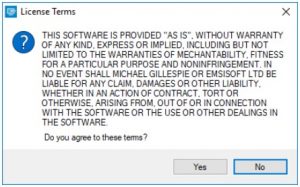
As soon as you accept the license terms, the main decryptor user interface comes up:
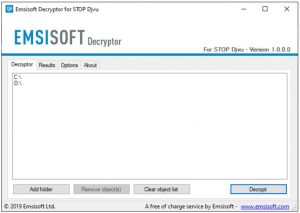
Select folders for decryption.
Based on the default settings, the decryptor will automatically populate the available locations in order to decrypt the currently available drives (the connected ones), including the network drives. Extra (optional) locations can be selected with the help of the “Add” button.
Decryptors normally suggest several options considering the specific malware family. The current possible options are presented in the Options tab and can be activated or deactivated there. You may locate a detailed list of the currently active Options below.
Click on the “Decrypt” button.
As soon as yo add all the desired locations for decryption into the list, click on the “Decrypt” button in order to initiate the decryption procedure.
Note that the main screen may turn you to a status view, letting you know of the active process and the decryption statistics of your data:
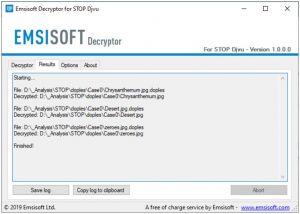
The decryptor will notify you as soon as the decryption procedure is completed. If you need the report for your personal papers, you can save it by choosing the “Save log” button. Note that it is also possible to copy it directly to your clipboard and to paste it into emails or forum messages if you need to do so.
Frequently Asked Questions
How can I open “.nppp” files?
nppp files contain important information. How can I decrypt them urgently?
If not, then you can try to restore them through the system function – Restore Point.
All other methods will require patience.
You have advised using GridinSoft Anti-Malware to remove Nppp. Does this mean that the program will delete my encrypted files?
You need GridinSoft Anti-Malware to remove active system infections. The virus that encrypted your files is most likely still active and periodically
runs a test for the ability to encrypt even more files. Also, these viruses install keyloggers and backdoors for further malicious actions
(for example, theft of passwords, credit cards) often.
Decrytor did not decrypt all my files, or not all of them were decrypted. What should I do?
We will keep you posted on when new Nppp keys or new decryption programs appear.
What can I do right now?
- In the United States: On Guard Online;
- In Canada: Canadian Anti-Fraud Centre;
- In the United Kingdom: Action Fraud;
- In Australia: SCAMwatch;
- In New Zealand: Consumer Affairs Scams;
- In France: Agence nationale de la sécurité des systèmes d’information;
- In Germany: Bundesamt für Sicherheit in der Informationstechnik;
- In Ireland: An Garda Síochána;
Video Guide
It’s my favorite video tutorial: How to use GridinSoft Anti-Malware and Emsisoft Decryptor for fix ransomware infections.
If the guide doesn’t help you to remove Nppp infection, please download the GridinSoft Anti-Malware that I recommended. Also, you can always ask me in the comments for getting help.
User Review
( votes)References
- Ransomware-type infection: https://en.wikipedia.org/wiki/Ransomware
- Twitter: https://twitter.com/demonslay335
- My files are encrypted by ransomware, what should I do now?
- About DJVU (STOP) Ransomware.
- Encyclopedia of threats.
- GridinSoft Anti-Malware Review from HowToFix site: https://howtofix.guide/gridinsoft-anti-malware/
- More information about GridinSoft products: https://gridinsoft.com/comparison

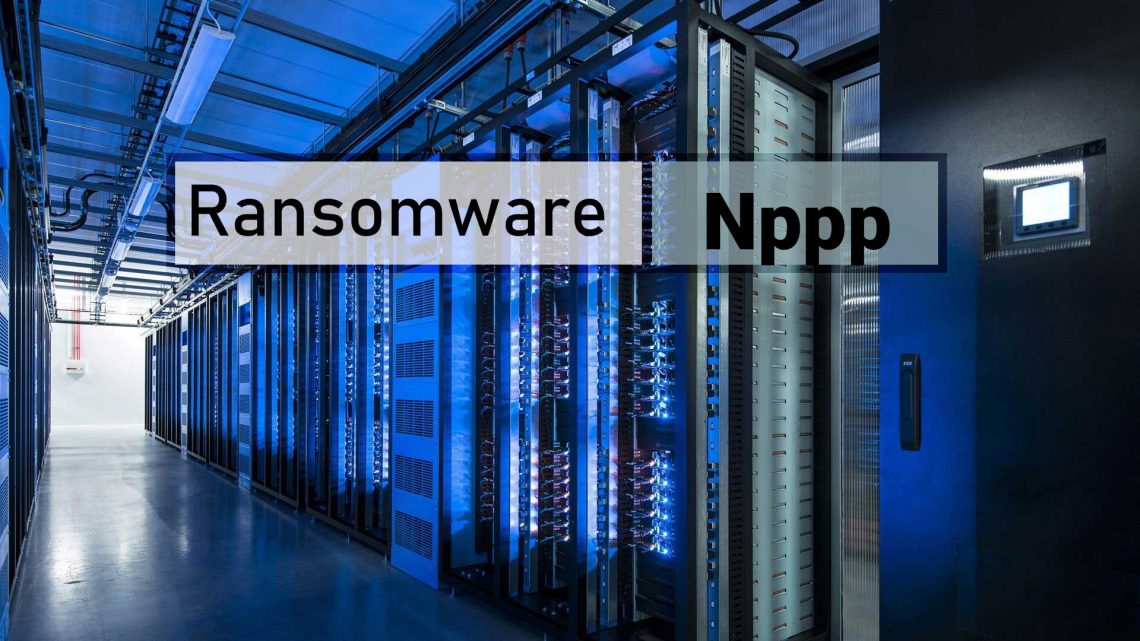

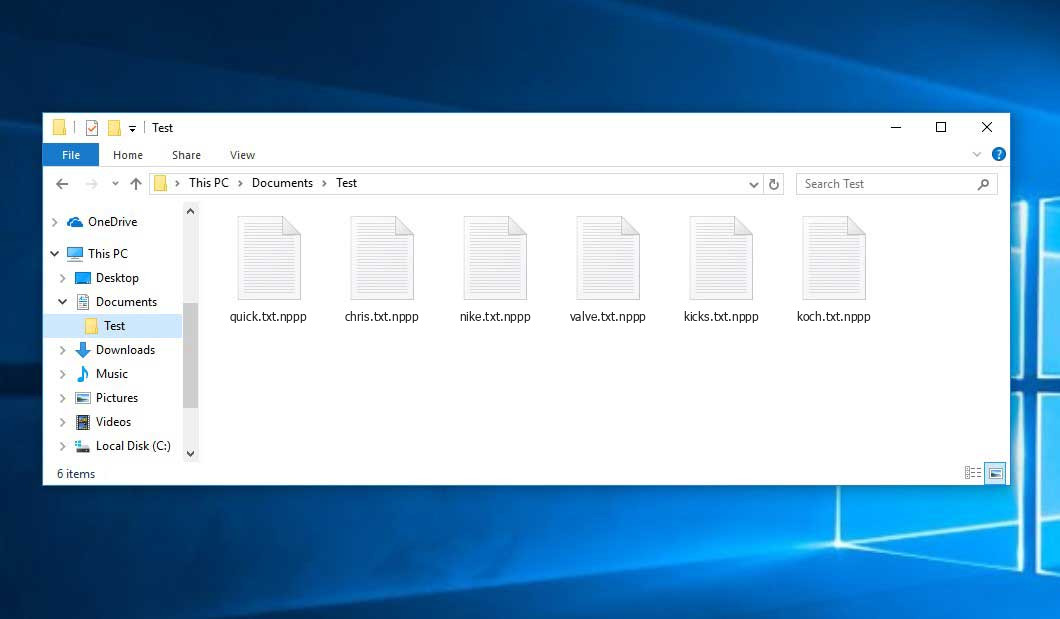
Hello, I have a problem with the .nppp extension. The Emsisoft software was unable to correct the files.
Decryptor message:
File: C: \ AMD \ WU-CCC2 \ ccc2_install \ VC13RTx86 \ vcredist_x86.exe.nppp
No key for New Variant offline ID: yUigCPpx6KxQZCQZfT8NsgOwnGDHwiQkVLy9UTt1
Notice: this ID appears to be an offline ID, decryption MAY be possible in the future
Personal ID:
0210a7d6yUigCPpx6KxQZCQZfT8NsgOwnGDHwiQkVLy9UTt1
The NPPP offline key was uploaded to the server. Try to decrypt.
Hello, I have a problem with the .nppp extension.
Personal ID: 0210a7d66ShI697I8iJKr7ZUaMO6giedbKeyZeSSCKfz6kWm
Thanks!
I can’t decrypt my files using the STOPDjvu tool. below message is showing.
No key for New Variant online ID: OsVBijqbuwI0p7XVSpQtR16gXI0NfNb399q9TOQe
Notice: this ID appears to be an online ID, decryption is impossible
Can you please suggest me a solution.
Source: https://howtofix.guide/nppp-virus/#how_to_decrypt_nppp_files
Error: No key for New Variant online ID: UJvbEu0Ld0dFzDOANIF3WhOCOpwCvRJKKJcy1Hyw
Notice: this ID appears to be an online ID, decryption is impossible
File: C:\Users\mc solution\Desktop\Tax 2019-20\Tax Deduction.pdf.npph
Error: No key for New Variant online ID: UJvbEu0Ld0dFzDOANIF3WhOCOpwCvRJKKJcy1Hyw
Notice: this ID appears to be an online ID, decryption is impossible
File: C:\Users\mc solution\Desktop\Tax 2019-20\unknown.pdf.npph
Error: No key for New Variant online ID: UJvbEu0Ld0dFzDOANIF3WhOCOpwCvRJKKJcy1Hyw
Notice: this ID appears to be an online ID, decryption is impossible
File: C:\Users\mc solution\Desktop\Tax 2019-20\Untitled.png.npph
Error: No key for New Variant online ID: UJvbEu0Ld0dFzDOANIF3WhOCOpwCvRJKKJcy1Hyw
Notice: this ID appears to be an online ID, decryption is impossible
I used grind
File: C:\MyDrivers\update\X1Carbon_USB30_5_0_4_43_WIN7_X64.exe.nppp
Error: No key for New Variant online ID: fr5EixOQNvrGBOuTbfKBKbiNFBIhjORIExrmsLvK
Notice: this ID appears to be an online ID, decryption is impossible
i use decrypt_STOPDjvu but cant clear nppp than my file
Error: No key for New Variant online ID: EbzX0LYS1FeTQssIDzUzflxlgSFlcrHhc6saCCse
please help me
Hello,
Thank you so much for your hard work in helping other people
I have a problem with the .nppp extension. The Emsisoft software was unable to correct the files;
Error: No key for New Variant online ID: dYbSgort12jN2zejUtAOnBW4w1Te8HIPajKeXfMy
Notice: this ID appears to be an online ID, decryption is impossible
Finished!
Can you please suggest me a solution.